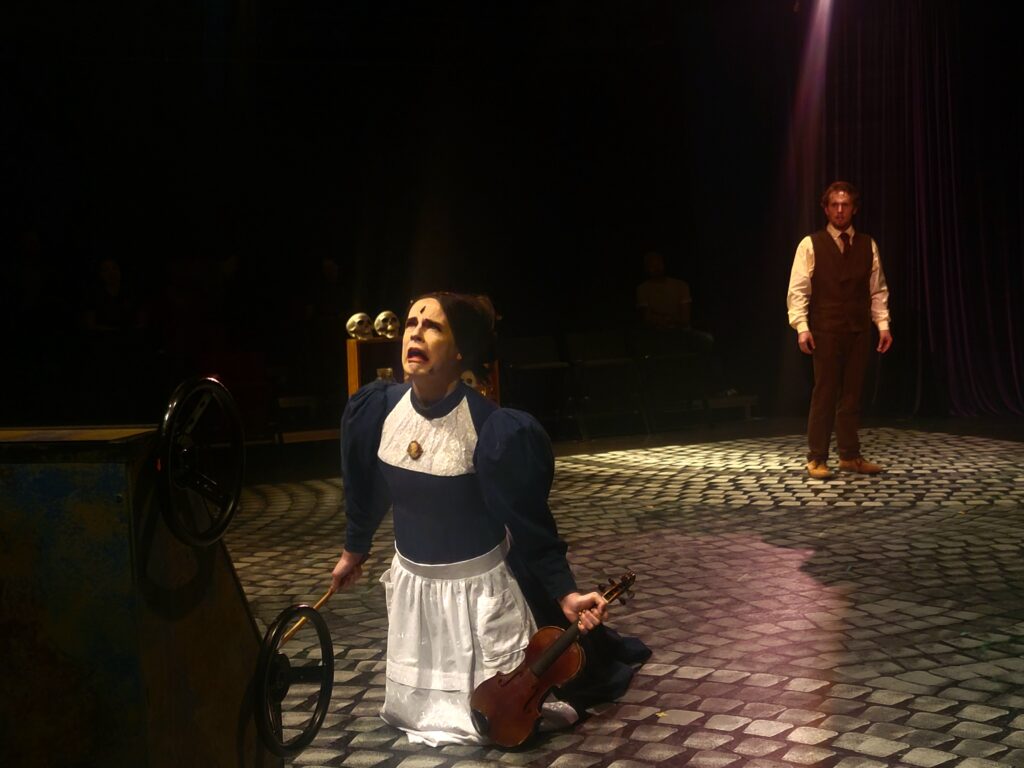By Lairen Brush

Mel Brooks’ “Young Frankenstein” immediately starts with an ominous song of the upcoming events, before thrusting the audience into the mind of the young grandson of the original Dr. Frankenstein from Mary Shelley’s novel.
The musical was held at Casper College Oct. 11 and 12th, and had follow up performances on Oct. 17-20, but the presentation did not start there.
Entering into the Black Box of Krampert Theatre Complex, the first noticeable characteristic in the room are the lights. Colors splash on the ground and the musicians on the catwalk above tune into the correct tones. On all sides is seating with foldable chairs and a quiet chatter from the few there as audience for rehearsal on October 9th. Notes on a piano signal the opening to the musical as the brighter lights dim and soften as the opening scene set up starts.
“We had around 30 or so people come to audition,” Joel Shura, the theater instructor at Casper College said, “And because we moved to the Black Box, a smaller space, it created a small intimate cast of ten ensembles and six named characters.”
“As far as the rehearsal process went it was fairly boring, because of how easy it was,” Roman Gaddis, the actor that played Dr. Frederick Frakenstein said, “Not boring in a bad way.”
The production did not start there, however.
“Originally, the show was possibly slated to be in our main stage theater and one of the first things that I suggested to the team was what would happen if we were to take a musical and try and put it into the black box space,” Shura said.
The goal was to create a personal and intimate experience.
“To create a more exciting sort of feel for the audience,” Shura said.
The actors had an experience to get over too.
“It was definitely a new feeling. This is the first time I’ve done theater in the round, let alone it being a musical. It was a really cool experience too. It’s a lot more personal with the audience,” Gaddis said.
There were struggles with the play itself too.
“I was not confident in my ability to memorize all of it that fast and be able to have all the dances down,” Gaddis said. “Especially the tap dancing.”
There were challenges with the music too.
“Usually an orchestra will be more together in terms of grouping. And so they were in more of an L shaped formation, I know they had to change the way in which they operate,” Shura said.
Both of these challenges were overcome to enhance the performance of the musical. And create a more immersive atmosphere.
“This was a great opportunity for us to play, have fun, and create something that we’re proud of in product, but also had a positive process as well,” Shura said
